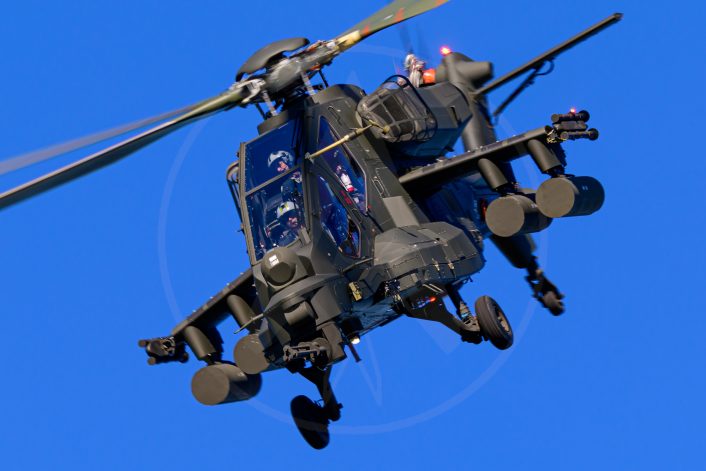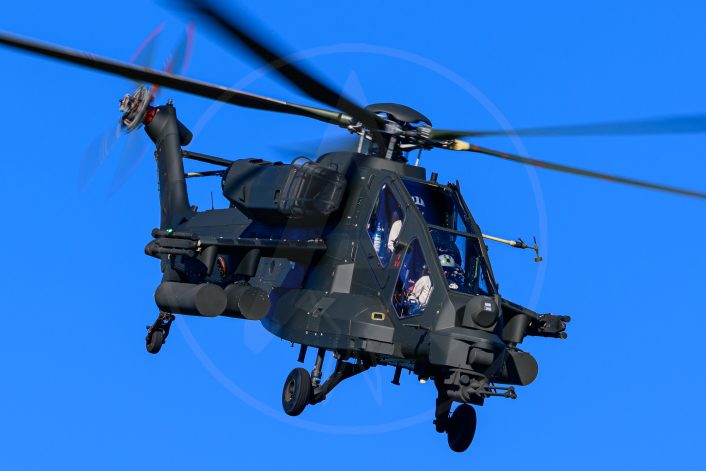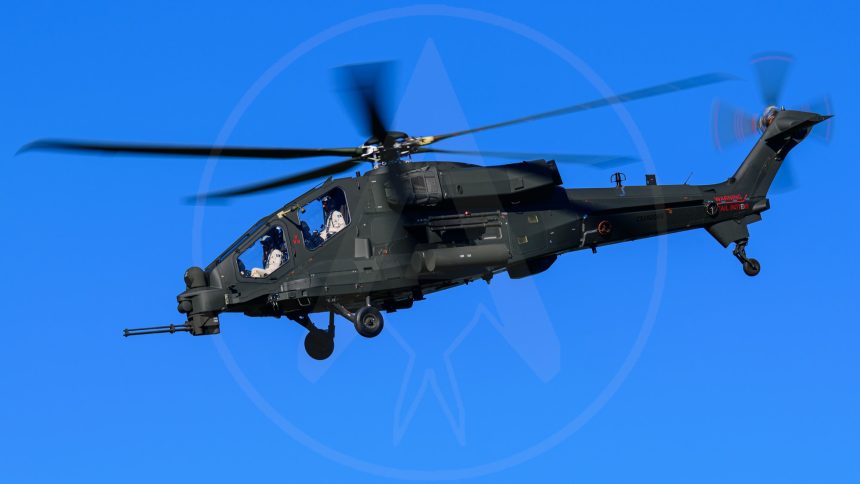According to Italian government’s documents, a prototype and three pre-production AW249s are currently being tested, while the initial order has been now increased to 17 helicopters.
The Italian Army has increased to 17 the number of AW249 attack helicopters currently on order, out of a planned need for 48 helicopters. The development emerged from the documents of the Italian Parliament and Ministry of Defense, as the additional order has not been publicly announced.
According to the documents, there are four helicopters involved in an extensive test campaign. Of these, one is the prototype, while the other three are pre-production helicopters. These three helicopters are owned by the Italian Army, but used by Leonardo to continue testing.
The three pre-series helicopters were contracted in 2017, and are expected to be delivered in the Initial Operational Capability (IOC) configuration, to be later upgraded to the Final Operational Capability (FOC) configuration with a first series of additional requirements, as requested in 2020. In 2021, four more FOC helicopters were added to the order, this this with the addition of a second series of additional requirements.
In 2024, ten additional AW249s have been added to the order, bringing the total to 17 helicopters. Additionally, the documents mention an option for two more helicopters. Together with the airframes, the contract includes an integrated logistical support package described as Performance Based Logistic (PBL) for 200 flight hours per year. The contract is worth about € 735 million.
The documents also mention some of the activities and systems included in the testing, such as Cyber Security, Flight Management System, Role Equipment, Battlefield Management System, Obstacle Warning System, Loitering Munitions, Anti-UAS, Stinger, Manned-Unmanned Teaming (MUM-T) Datalink, GPS with Selective Availability Anti-Spoofing Module (SAASM).

Testing progresses
As testing continues, a pre-production AW249 took part in the Italian Army’s operational exercise “Stella Alpina 2024” at Lake Fedaia, near Trento in the North-East of Italy. The helicopter was integrated into the operation’s assets within the multi-domain tactical bubble.
The two-week exercise saw 600 personnel from specialized units of the Italian Army train on countering new threats in a multi-domain scenario, integrating innovative technologies. In fact, among the goals set by the service there was the deployment of systems, equipment and vehicles recently fielded or currently being acquired, such as the AW249.
According to Flight Global, quoting the AW249 program manager Alessandro Alfonso, the participation to the exercise required a revised timeline for the arrival of the two outstanding pre-serial (PS) aircraft. Under the new timeline, AW249 PS4 was expected to fly before the end of 2024, followed in early 2025 by PS2.
The prototype was actually the second AW249 to fly in March 2023, while the helicopter PS2 flew for the first time in August 2022. However, Alfonso noted that there will be no change to the overall program schedule to start the deliveries of the AW249 in 2027.
During summer 2024, the first two helicopters performed medium-altitude and hot-weather trials, both carried out in Calabria in southern Italy. A first round of hot-weather testing was also performed in Spain during the summer of 2023, while in 2025 the helicopter will undergo high-altitude testing.
The AW249 was already part of firing campaigns, with the 20mm Oto Melara TM197B chin gun and 70mm unguided rockets tested in March 2024. During the first quarter of 2025, the helicopter is expected to test the Rafael Spike and Spike ER air-to-surface missiles, and an undisclosed air-to-air missile, which could be the AIM-92 Stinger, or ATAS (Air To Air Stinger), mentioned in the documents.

The AW249
The AW249, designated AH-249A NEES (Nuovo Elicottero da Esplorazione e Scorta – New Exploration and Escort Helicopter) and nicknamed “Fenice” (Italian for “Phoenix”), is the only new Western combat helicopter designed from scratch in recent years. The helicopter is being developed to replace the A-129 Mangusta which has been in service with the Italian Army since the 1990s and upgraded throughout the years until the current AH-129D variant, planned to be retire the AH-129 from 2025.
The AW249 helicopter, whose first flight took place on August 12, 2022, incorporates advanced technologies that enhance digitization, connectivity, sensor fusion, information superiority, and interoperability. Such features make it a force multiplier in multi-domain operations, seamlessly integrating into air, land, sea, space, and cyber domains.
Many mistakenly believe the AW249 is an AH-64 Apache look-alike, but beyond their tandem cockpit setup, the similarities are minimal. The AW249 represents a distinct evolution from its predecessor, the AW129, which traces its roots back to the A129 developed in the late 1970s and first flown in 1983.
In fact, the original A129 was born as an evolution of the concept introduced by the AH-1 Cobra, the first to use a tandem cockpit configuration. Contrary to the Cobra, the Mangusta was based on a twin-engine configuration with a four-blade main rotor. The helicopter was intended as a pure anti-tank platform and armed only with TOW anti-tank missiles and unguided rockets. Only in the 2000s, with the A129CBT upgrade, the helicopter was equipped with a M197 20 mm gun.
While the AW249 builds upon lessons learned from the AW129, it features a new airframe, transmission, engines, and avionics. While stealth was not a requirement, the AW249 incorporates certain features to enhance its LO (Low Observability) characteristics, such as reducing radar cross-section and infrared signature, in order to make its detection harder.
The AW249 features a complete open architecture with significant margins for future growth. The core of its abilities, in addition to high performance, is the ability to be fully integrated and interoperable in the modern multi-domain battlefield. The AW249 features an advanced large area display human-machine-interface and touch screen/gesture recognition devices, together with helmet-mounted devices and a Battle Management System specifically developed by Leonardo.
You can read more about the AW249 and its capabilities in our report about its international debut at Eurosatory in Paris in June 2024.









